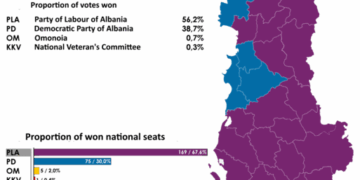
John W. Broomes, a Trump-nominated judge of the U.S. District Court in Kansas, opened the door (just a crack) to the first real potential challenge to the National Firearms Act of 1934 (NFA). He ruled on Wednesday that charges against a defendant for possessing two machine guns be dismissed.
At issue is the law 18 U.S.C. § 922(o), which states that “it shall be unlawful for any person to transfer or possess a machinegun.” The law emanates from the National Firearms Act signed into law by then-President Franklin D. Roosevelt. It was passed in the aftermath of the Prohibition Era’s St. Valentine’s Day Massacre (1929) and the attempted assassination of President-elect Roosevelt in 1933. (That was a time when a quarter of Americans were out of work thanks to the Federal Reserve-inspired Great Depression, and a time when the communist influence in the federal government was just beginning to be felt.)
The NFA’s constitutionality was successfully challenged five years later in United States v. Miller. However, that decision was overturned by the Supreme Court, which ruled that the NFA “was not unconstitutional as an invasion of the reserved powers of the states and did not violate the Second Amendment of the U.S. Constitution.”
The Matter Stood for Nearly 90 Years
For almost 90 years, possession of machine guns, short-barreled rifles, and short-barreled shotguns was greatly restricted. Owners were required to obtain permission from the Bureau of Alcohol, Tobacco, Firearms and Explosives (ATF), pass a background check, provide fingerprints, register the now-offending firearm with the agency in the NFA database, and pay the equivalent of $4,555 in today’s money as a fee.
Owners successfully navigating the new restrictions also were required to obtain permission from the ATF before transporting the firearm across state lines.
The domestic manufacture of machine guns disappeared following enactment of the intentionally misnamed Firearm Owners Protection Act of 1986.
Severe Punishment for Violation
Violation of the law is punishable by up to 10 years in federal prison, forfeiture of the firearm in question, and a ban on possessing any firearms in the future. In addition, fines of up to $250,000 (per firearm) could be levied upon citizens violating the law.
Anti-gun forces have relied heavily on Miller to make and bolster their case against the Second Amendment. Pro-Second Amendment advocates challenging the decision in Miller have been largely silenced ever since.
Broomes’ Opinion: Brief and to the Point
Judge Broomes made short shrift of the matter in just 10 pages. He used the hammer of Bruen to break the anvil of the charges against defendant Tamori Morgan, who was charged with owning a semiautomatic rifle and a semiautomatic pistol that he had modified to allow firing more than a single round with one squeeze of the trigger. He was not charged with using either of them in a criminal way, but merely possessing them.
As Broomes wrote:
This matter is before the court on Defendant’s motion to dismiss based on Second Amendment grounds. A response and a reply have been filed, and the court held a hearing to establish additional facts about the weapons charged.
The motion is thus ripe for review.
The court finds that the Second Amendment applies to the weapons charged because they are “bearable arms” within the original meaning of the [Second] amendment.
The court further finds that [thanks to Bruen] the government has failed to establish that this nation’s history of gun regulation justifies the application of 18 U.S.C. § 922(o) to Defendant.
The court therefore grants the motion to dismiss.
The Government Failed
Attorneys for the federal government failed to find any such “history”:
The government relies on Heller [District of Columbia v. Heller] to argue that machine guns are not covered by the plain text of that amendment. The Heller language cited by the government is unavailing.
First, the government’s interpretation of Heller relies exclusively on dicta (and circuit authority that predates the historical analysis mandated in Bruen)—machineguns were not at issue in Heller.
Second, the government’s interpretation would run directly counter to the essential analysis in Heller: just as the Fourth Amendment applies to modern “searches,” the Second Amendment applies to arms that did not exist at the country’s founding.
If at First You Don’t Succeed…
U.S. attorneys tried another tack:
To meet its burden, the government advances only two potential historical analogs.
First, the government points to English common law, which it asserts prohibited riding or going [out] armed with dangerous or usual weapons.
Second, the government cites one case from the North Carolina Supreme Court in 1824 that recognized an offense to arm oneself “with dangerous and unusual weapons, in such a manner as will naturally cause a terror to the people.”
But both examples are disanalogous to what Defendant is charged with here—simple possession of a machine gun.
Try, Try Again
The U.S. attorneys tried again, claiming that machine guns were “dangerous and unusual” or “highly unusual in society at large.” But again they failed:
As Defendant points out, “[t]here are over 740,000 legally registered machineguns in the United States today.”
Machine guns have been in existence for well over a century. While the federal government has regulated transfer and possession of such weapons since passage of the National Firearms Act in 1934, it did not outright prohibit possession of machineguns until passage of the Firearms Owners Protection Act in 1986.
Even then, the law did not prohibit the possession of all machineguns; rather, § 922(o) merely prohibits possession of machineguns that were not lawfully possessed as of the date that prohibition went into effect in 1986.
Thus, even today, it is perfectly legal for a person who has not been divested of his firearm rights under some other provision of law to acquire and possess a machine gun, so long as it was lawfully possessed by someone before the relevant date in 1986, and so long as he complies with the National Firearms Act’s requirements to obtain and possess the weapon.
In that sense, machine guns are not unusual.
The government fails to address these facts, and thus fails to meet its burden to demonstrate that possession of the types of weapons at issue in this case are lawfully prohibited under the Second Amendment.
Broomes’ Conclusion
The judge concluded with the following:
To summarize, in this case, the government has not met its burden under Bruen … to demonstrate through historical analogs that regulation of the weapons at issue in this case are consistent with the nation’s history of firearms regulation.
Indeed, the government has barely tried to meet that burden….
Under Bruen’s framework for evaluating Second Amendment challenges, it is the government’s burden to identify a historical analog to the restrictions challenged in this case.
This the government has failed to do….
The motion to dismiss on Second Amendment grounds is GRANTED.
Likely Appeal
But likely not for long. Pro-Second Amendment writers guardedly rejoiced over the ruling, but were quick to point out that the federal government’s Department of Justice, seeing the potential risk to the NFA, will be quick to appeal the ruling. They are likely to appeal to the liberal, anti-gun 10th Circuit Court of Appeals. Jake Fogleman wrote for The Reload, “The prospect of gun-rights advocates overturning the federal machine gun ban remains unlikely. But the odds were worse before this ruling.”

































